Desert ant heat survival guide
Natalia de Souza Araujo is a postdoc at the Université Libre de Bruxelles, where she uses bioinformatics and molecular biology to answer exciting evolutionary questions. Currently, she works on gene expression and comparative analyses in a study about heat adaptation in ants. Here, she highlights some main points about her research.
A View by Natalia de Souza Araujo

Imagine you are an ectothermic organism living in the middle of the Sahara Desert and you must spend the hottest hours of the day scavenging for food to survive. If that is not challenging enough, imagine that your entire body is only a few millimetres above ground where the temperature is up to 70oC! This is the typical life of the silver ant, Cataglyphis bombycina, and more surprisingly, this species is not the only one. The Cataglyphis genus lives in the Palearctic deserts, while other desert ant genera such as Ocymyrmex and Melophorus occur respectively in the Afrotropic and Australasian ecozones. These deserts are among the most inhospitable environments on the planet due to their extreme temperatures and arid conditions. In addition, unlike many desert animals which are nocturnal or crepuscular, these ants are frequently more active during the warmest hours of the day, a great strategy as you can avoid predators and competitors while being able to feed on dead insects who succumbed under the scorching heat, but also a very risky one.
To survive and thrive in these hostile environments, desert ants have evolved remarkable morphological, behavioural, physiological, and molecular adaptations. One of the most striking of these adaptations is found in C. bombycina: these ants sparkle under the sun because their bodies are covered with prism-like silver hairs that reflect the sunlight. Another more common adaptation found in desert ants is long legs, which allow rapid running in the sandy desert while searching for food and shelter and to escape deadly environmental conditions. Their legs also provide an advantage in keeping their body a little bit further from the ground, and if this distance is not enough, some desert ants can additionally raise their gaster to a vertical position (thanks to an adapted petiole), thus distancing crucial body parts from the burning sand. Additionally, desert ants can rely on their very accurate sense of spatial orientation and direction which allows them to always find the shortest distance from their current position to their colony.
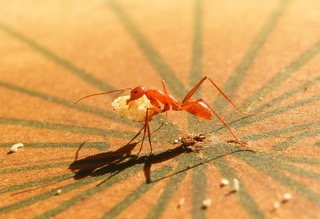
The thermal tolerance of desert ants also requires molecular adaptations at the cellular level. Some of the molecules involved in these adaptations are well known, such as the heat shock proteins (HSPs). These molecular chaperones are important for cellular maintenance and stabilization in most living organisms because they stabilize, fold, and transport proteins, as well as facilitate the degradation of unnecessary protein aggregates within the cells. Under stressful conditions (such as heat stress) HSPs’ structural role is known to be essential for cell survival. Still, not all organisms with HSPs are able to stand heat the same way desert ants can. What’s the difference? Apart from HSPs, we know other molecular mechanisms such as cuticular hydrocarbons and antioxidants also play a role in heat tolerance however, we still lack a systemic understanding of all the molecular pathways underneath desert ants’ response to heat and how they interact. Now that many regions of the world are expected to experience a significant increase in temperature within the coming years due to climate change, this knowledge could give us a glimpse of how molecular adaptations related to thermal tolerance and plasticity evolved, improving our predictions of how these changes could affect other species. For this reason, we are currently investigating the gene expression dynamics of ants from multiple genera – including Cataglyphis, Ocymyrmex, and Melophorus – in response to heat stress. I am the bioinformatician in this study, and my role is to compare all the genes that are expressed when the ants are under extremely high thermal conditions to their regular gene expression profile. With this we look to better understand the molecular strategies used in each species, and if these responses are somewhat comparable across species.
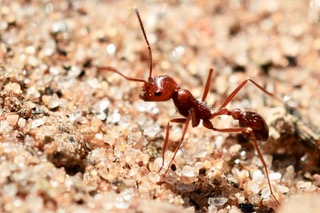
In summary, desert ants evolved many mechanisms to endure unbelievably high temperatures. Their adapted morphology and behavioural strategies are well known, but we are only starting to understand their unique molecular adaptations. Moreover, since high heat tolerance of desert ants has independently evolved more than once in ants, the comparison across these lineages gives us the opportunity to understand how plastic the molecular responses to heat can be and therefore, to better predict how other organisms could possibly be affected by a world of increasing temperatures.
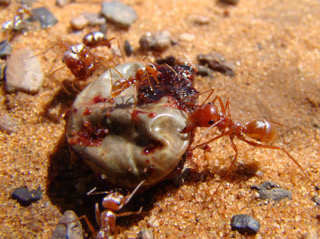
More to read
Perez, R. and Aron, S. 2020: Adaptations to thermal stress in social insects: recent advances and future directions. – Biol. Rev. doi:10.1111/brs.12628
Wehner R. 2020: Desert Navigator: the journey of an ant. – Harvard University Press
A BBC-documentation on Cataglyphis ants:
A video on Cataglyphis bombycina by Phil Hoenle:
MNB update: In an earlier version, the title of the first video was different and the second video was not present.



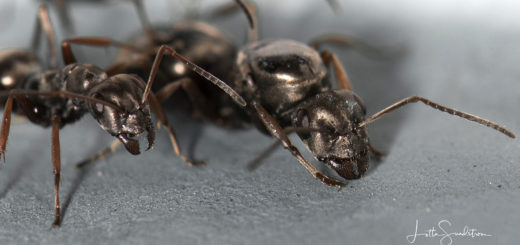
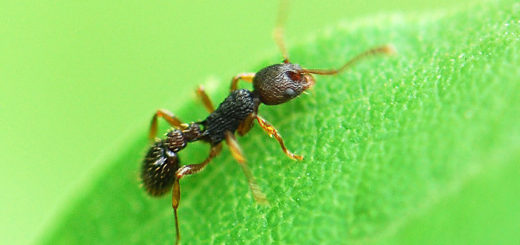
This is exactly what I was looking for thankyou so much for your help it means a lot to me and i wish you the best of luck